National STEM Day: These museums will get kids excited about science, technology, engineering and math
Nov. 8, 2018, is National STEM/STEAM Day. Its purpose is to inspire youth while getting them excited about exploring and pursuing interests in the fields of science, technology, engineering, art and math.
Statistics have shown that few American students tend to pursue STEM fields and that the need for STEM-oriented job skills is increasing, according to The Learning Counsel.
"There are massive global issues for all of us to investigate and solve, everything ranging from climate change to disease and the advancement in technology, and we need people to solve them," said Andrea Ingram, vice president of education for Museum of Science and Industry, Chicago (MSI), which is the largest science center in the Western Hemisphere.
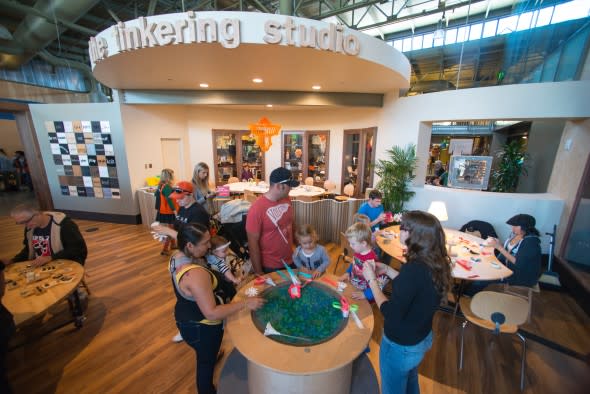
The Exploratorium's Tinkering Studio™ provides a large, eclectic assortment of materials, tools and technologies for people to use as they explore and create. (Photo/Gayle Laird ©/ Exploratorium)
"Our next generation of innovators and scientists are right outside our doors in our neighborhoods and communities," Ingram told AccuWeather.
"It's our job and responsibility as a civic leader and as a cultural institution in this community to help connect to that talent, to help build that talent and empower them to be part of the solutions to the issues that they and their children will be facing," she said.
Below are four national museums that will get kids excited about exploring the fascinating fields of STEM.
1. The Exploratorium - San Francisco, California
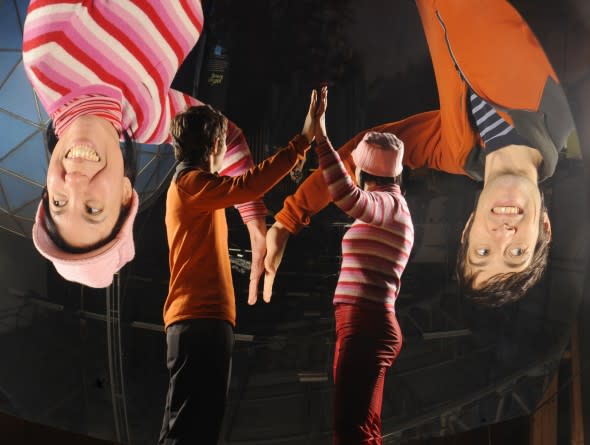
Giant Mirror is a curved mirror which creates images that appear to float in space. (Photo/Amy Snyder ©/Exploratorium)
This public learning laboratory allows visitors to explore the world through science, art and human perception.
"Our vision is a world where people think for themselves and can confidently ask questions, question answers and understand the world around them," according to its website.
Exhibits at the Exploratorium, which first opened in 1969, aren't just designed to be observed. Visitors are encouraged to play and engage with them. The museum's website notes that it has created its own hands-on exhibits since opening 49 years ago. The Exploratorium currently has over 650 exhibits on display, including the Shadow Box exhibit.
Visitors can capture a moment in time as a strobe light and giant phosphorescent screen allow them to pose and imprint temporary shadows in this long-running exhibit.
"The shadow-catching phosphorescent material on this wall is the same as you've probably seen in various ‘glow-in-the-dark' products," according to the website. "Energy from incoming light gets absorbed in this material in the form of excited electrons - that is, electrons raised to a higher energy state. As these electrons gradually de-excite, they release their energy as a visible glow."
2. Franklin Institute - Philadelphia, Pennsylvania
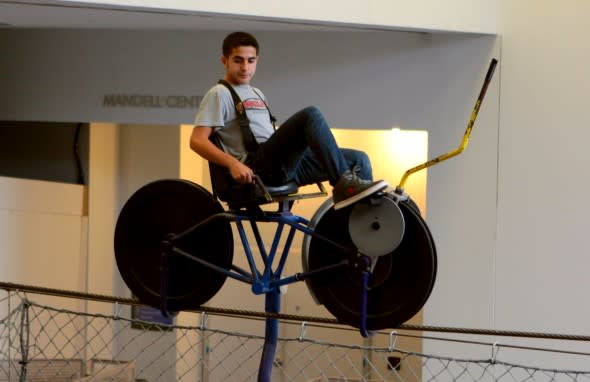
A visitor takes a ride on the SkyBike exhibit at the Franklin Institute. (Photo/Franklin Institute)
The Franklin Institute was founded in 1824 in honor of Benjamin Franklin, America's first scientist. It's one of the oldest centers of science education and development in the United States.
"Today, the Institute continues its dedication to public education and creating a passion for science by offering new and exciting access to science and technology in ways that would dazzle and delight its namesake," its website reads.
It offers 12 world-class permanent exhibits that give visitors hands-on learning experiences, allowing them to learn about key science concepts in creative and engaging ways.
An exhibit sure to attract curious young minds is Sir Issac's Loft. Described as a "playground of experimentation," the exhibit features chain reactions, falling objects and optical illusions that help bring life to Newton's laws in "whimsical and artful ways."
3. Museum of Science - Boston, Massachusetts
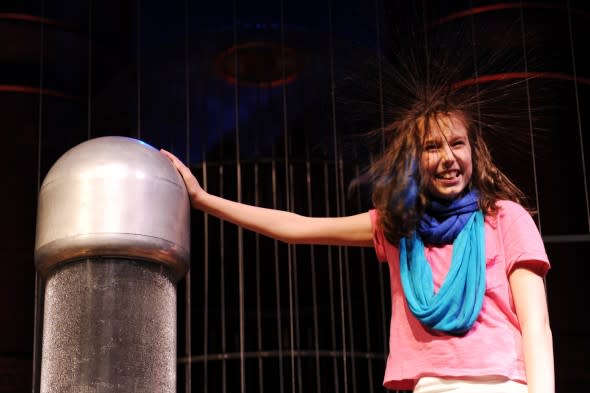
A visitor enjoys being part of an incredible live demonstration at the Theater of Electricity at the Museum of Science, Boston. (Photo/© Matthew Modoono/Museum of Science)
As one of the world's largest science centers and Boston's most attended cultural institution, the Museum of Science's 700 interactive exhibits attract about 1.5 million visitors annually.
The Museum's exhibits all have tie-ins to STEM learning in some form. One of the recent temporary exhibits is Space: An Out-of-Gravity Experience.
On display through 2018, it features a variety of interactives for guests to learn about the experience of astronauts on the International Space Station (ISS), including some of the feats of engineering that support astronauts in space.
The Museum's Discovery Center is geared towards children up to 8 years old. Developed in collaboration with local researchers from various institutions, it aims to encourage kids to take part in STEM activities geared toward early learners.
4. Museum of Science and Industry (MSI) - Chicago, Illinois
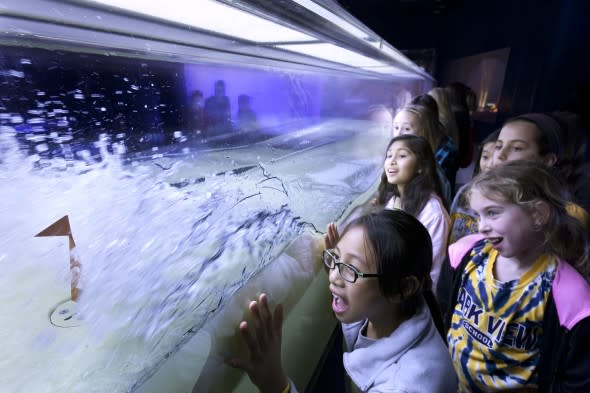
(Photo/Museum of Science and Industry, Chicago)
Founded in 1933, MSI is nationally recognized for its award-winning educational programming that challenges kids to achieve their greatest potential in STEM education.
MSI's state-of-the-art digital fabrication laboratory, the Wanger Family Fab Lab, allows visitors to dream up, design and create just about anything they can think of using cutting-edge software and equipment, according to its website.
MSI emphasizes the importance of tapping into the curiosity of youth. "Curiosity is what drives society forward; it is the lifeblood of all human progress," its website reads.
"[Tapping into their curiosity] means motivating them, helping them see that all of this is relevant and connected to their world, and that builds their interest and makes them want to learn more," Ingram told AccuWeather.
